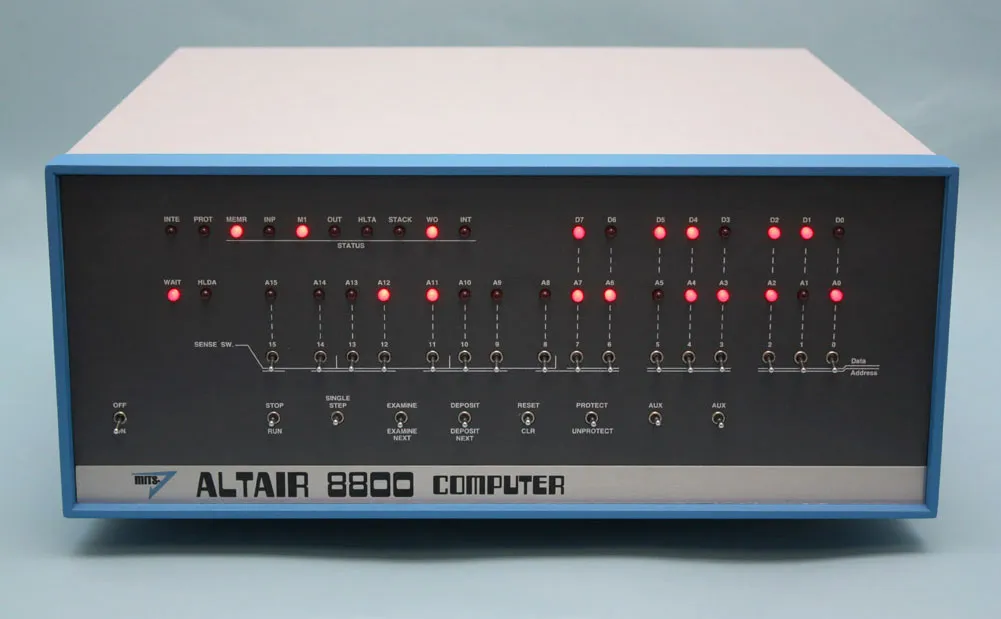🧠 Product Designers can't disrupt
This is about product designers working in the industry. I believe that they have very limited space for disruption in the tech industry. Why do I think this way? Because they can only work with a digital system at only one level of abstraction. A computer is a complex machine; starting from transistors, it builds up to the GUI with which a layman interacts. However, the computation is happening in the net of transistors. Several in-between layers abstract the workings of its lower layers so that the task of interacting with the computer becomes easy. Electronics engineers were the first HCI researchers who took the first step of making it easier for humans to work with computers. Have a look at the image below, ALTAIR 8800, which is programmed in binary using the set of switches given at its front. One really needs to understand how the inside works to understand how to operate the switches and program the computer. The next level of abstraction over it was the assembly language over which high-level languages were based. From these high-level languages are built the GUI interfaces that we all are so well versed with. GUI is meant for layman users; it is the abstraction level where a product designer works.
-
 Altair 8800 Computer
Altair 8800 Computer
Design first approach is useful in creating software where you are trying to develop a new and improved mental model for how your software works. Product designers are skilled at this particular task of coming up with newer models of representation. This is where they can bring disruption - Newer models of information representation in software, for example, Notion.
The place where product designers fail is coming up with ideas for new technologies that inherently support new and improved forms of interaction with a computer. An example of this would be products like DALL-E, a search engine. These software products are heavily dependent on a deeper level of understanding of the underlying technology. And the space for disruption in this segment is much larger and less competitive than where product designers are able to disrupt.
For product designers to be engaged in the process of design for a product, they need to start at a particular level of abstraction (GUI in the case of software) that can easily be understood by them visually so that they may come up with a representation that is much easier to work with. Consider an industrial designer for example who is designing a keyboard, they can't work at the level of implementing the inner electronics, however, they are well suited to work on how the keys will be laid out, what material to use for each key, design of each key, and so on.
Designers who are comfortable working at lower levels of abstraction (that are not visual) obviously have an advantage. By the virtue of this skill, they gain the freedom to implement new interfaces that can support completely newer forms of visual representations that were not possible earlier with existing products.
Although this started out as a rant about designers it actually made me realize that each and everyone is a designer developing newer and improved architectures for the level of abstraction that they work with.